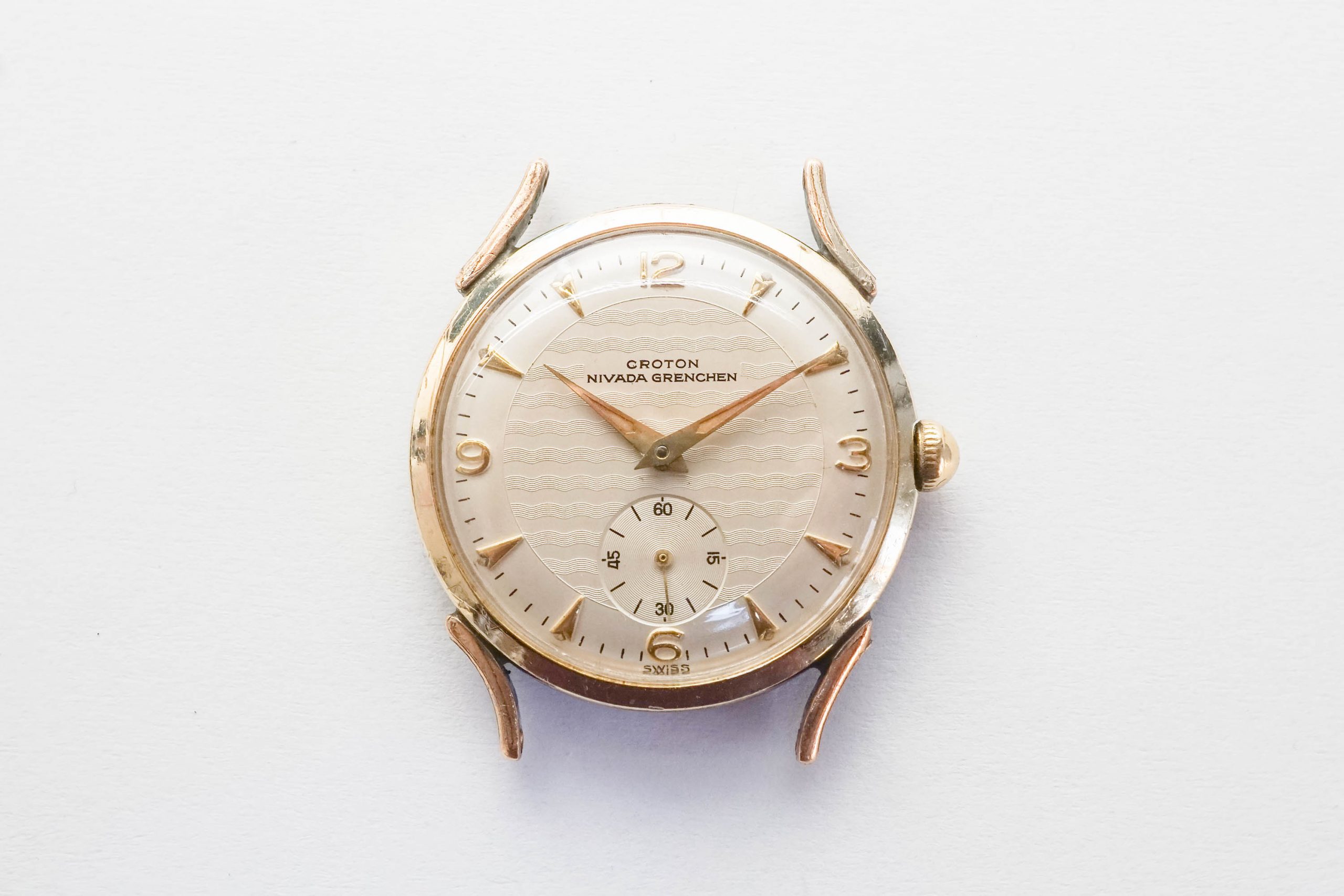Technical Terms Used in this Article
Base Metal – A common and inexpensive metal, for example, iron, nickel, lead or zinc.
Beryllium Copper – An alloy of copper with a small percentage of beryllium added to give the alloy superior strength and durability.
Keyless Works – The manual winding, time and date setting mechanism attached to the crown and stem.
Main Plate – The central layer of the movement to which all other components are fixed.
Setting Lever – A component in the keyless works that controls the operation of the stem and crown in the various positions.
Setting Lever Jumper – A component in the keyless works that defines the positions the stem can take and provides the tension to maintain those positions.
Setting Lever Screw – A screw in the main plate that constrains the movement of the stem and crown for time setting and winding.
A Family Hierloom
For this restoration workbench, long time friend of Beyond The Dial and occasional contributor John Drenning sent me his late father’s watch. Details on the watch were scarce – John was not sure when nor how his father acquired the watch. It arrived dirty, corroded and not working. I could not set the time and the crown fell out. The plating on the case was missing in many areas and had clearly seen much use. The condition of the dial, hands and movement however, indicated that this was a watch ripe for restoration.
Croton – A Swiss-American Collaboration
John’s father’s watch was produced by the Nivada Grenchen company some time during the mid-60s. The Wülliman Schneider Nivada company began manufacturing watches in 1926 in the town of Grenchen, Switzerland. By the late 1930s, the company had cut a deal with the New York-based Croton Watch Company to import and distribute Nivada watches within the US. This long-standing business deal lead to the North American watches being co-branded Croton Nivada or as in this case, Croton Nivada Grenchen
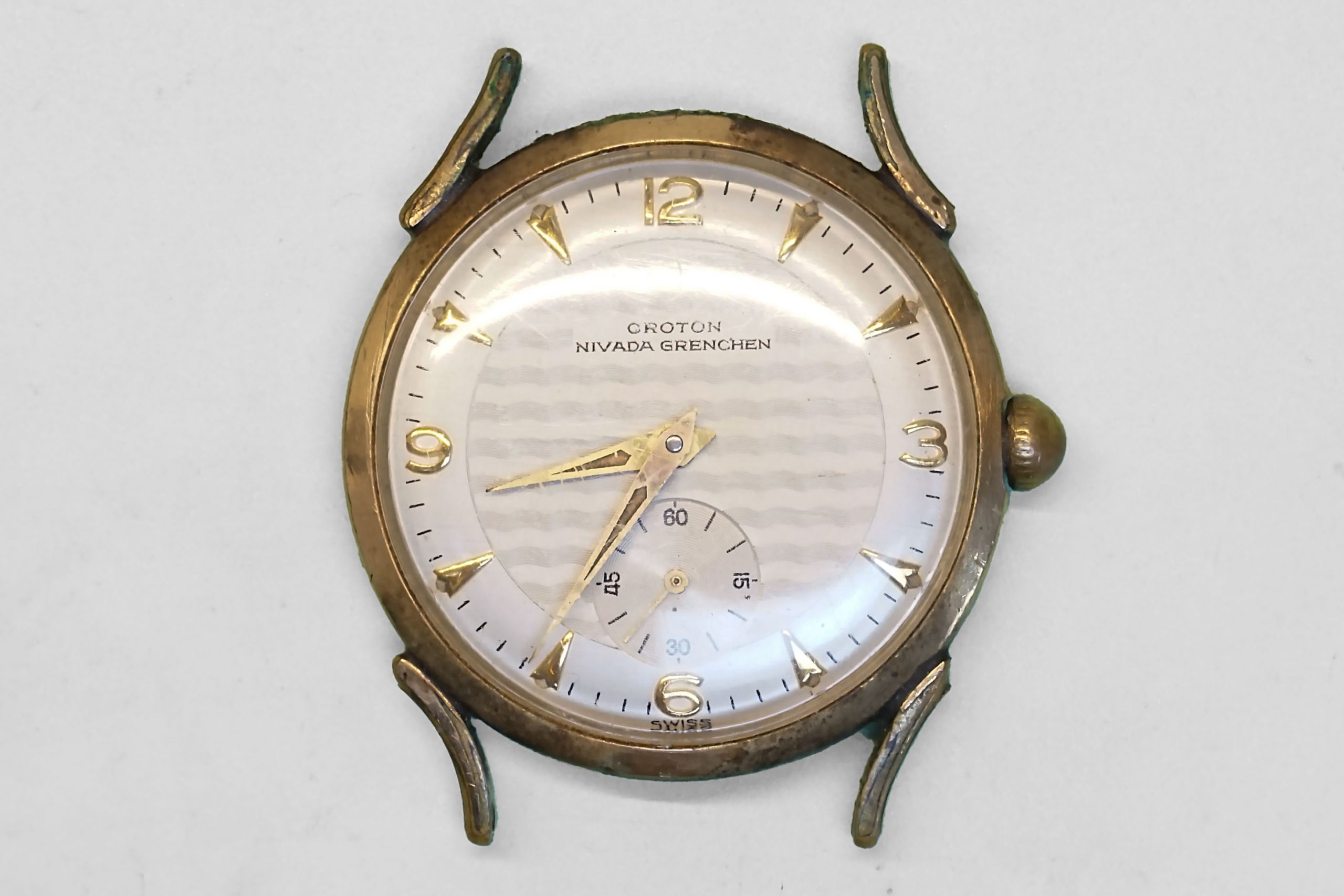
The watch’s art deco dial immediately commanded attention, even under the scratched up dial. The center of the ivory-colored dial comprises a series of embossed waves. Around the outside of the textured central section is a smooth track punctuated by embossed gilt markers and numerals at 12, 3, 6 and 9. A small seconds dial is placed at 6 cut below the embossed wave section. The gold-colored hands contained some lovely aged lume that had turned a rich ochre colour that matched both the lume spots on the dial and the gold case. The aged lume complemented the ivory dial perfectly and gave the watch a tasteful complementary color scheme overall.
Restoration Assessment
Unfortunately, the 60-year old case had not faired as well as the dial. The gold plate had worn off in a number of places, particularly on the lugs. Where the protective plating had vanished the base metal underneath had eroded badly. This is not uncommon with base metal, plated cases. Gold, being a chemically inert metal protects the base metal case from the elements, in particular, from the acidic oils that protect our own skin but can attack and corrode reactive metals. Once the gold plate wares away there is nothing to protect the cheaper metal from those acidic oils and the metal literally vanishes into thin air.
Chemical erosion was not the only damage sustained by the watches lugs. The lug between 10 and 11 o’clock has been hit at some point bending it out of shape although there were no signs of cracks or damage to the solder at the base of the lug. The only side-effect of the damage seems to be a lug to lug distance reduced from the original 17mm to 16.5mm.

This is Why Watches Get Abandoned in Drawers
Initially the watch would not wind or run as the crown and stem were so loose they fell out of the watch. However, re-inserting the the stem and tightening the setting lever screw allowed the watch to be wound and run. The time however, could still not be set by pulling out the stem to its second position I could tell that something was likely broken within the keyless works. There was no click when the stem was pulled and no sense of any gears meshing within to adjust the hand position. Removing the movement from the watch and then the dial from the movement confirmed a broken setting lever jumper.
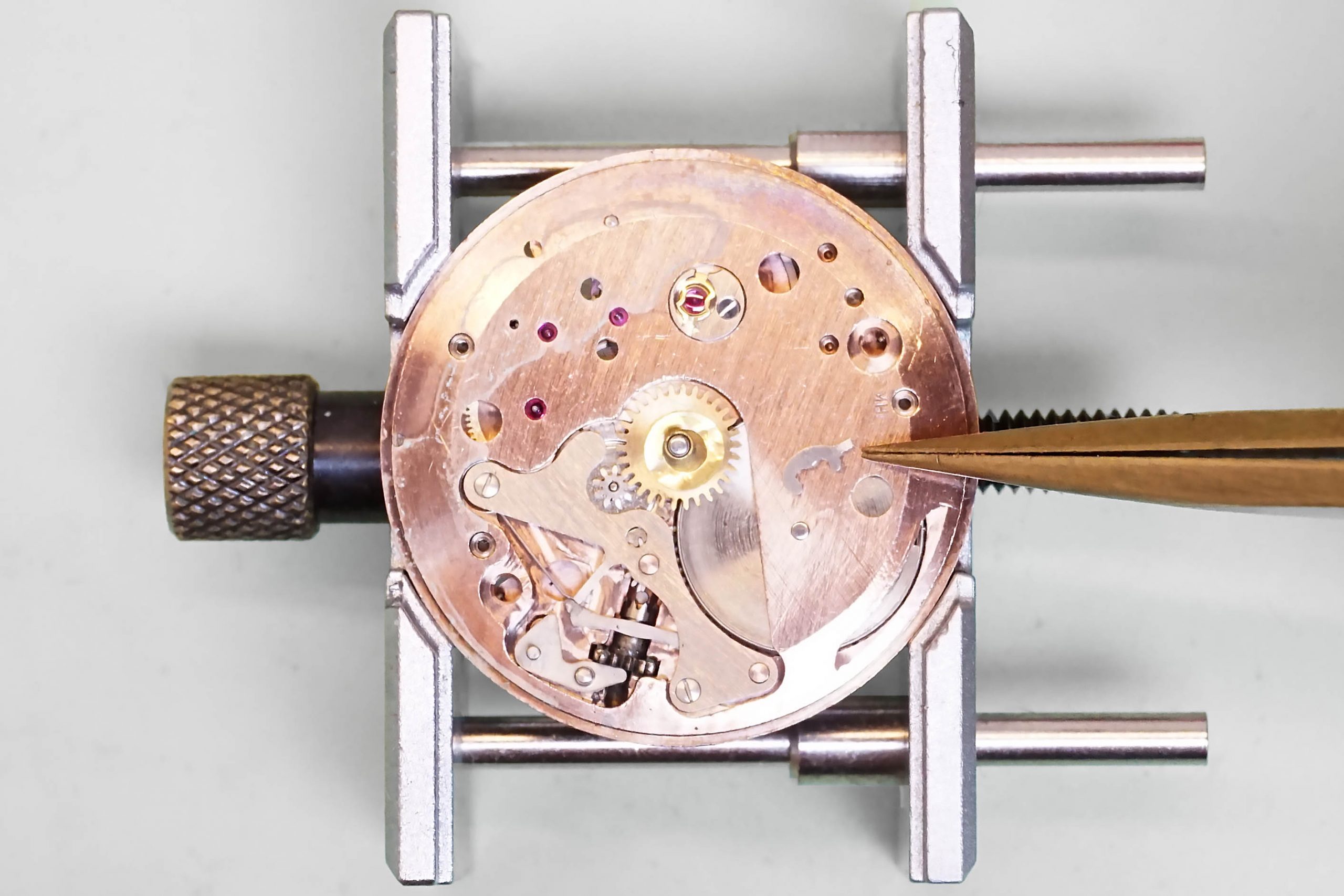
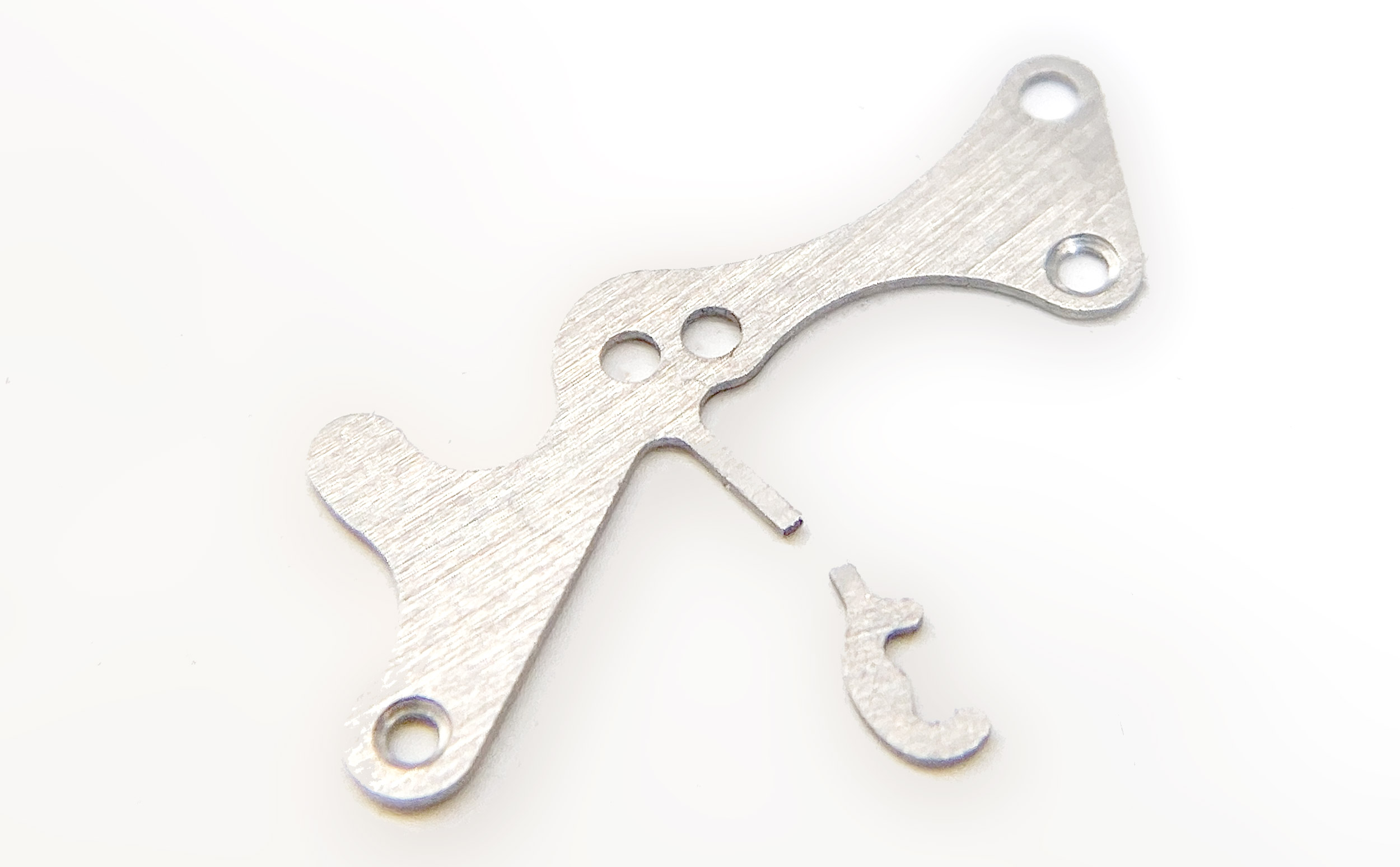
With the dial removed, some moisture damage was apparent on the beryllium copper plating of the main plate. The plating had stopped any rust forming but a definite water stain was visible. Thankfully there was no evidence of this moisture on the dial. Given the location of the stain, it was likely the water had entered via the crown and wicked itself over the main plate under the dial – a lucky escape for the watch’s pretty art deco dial.
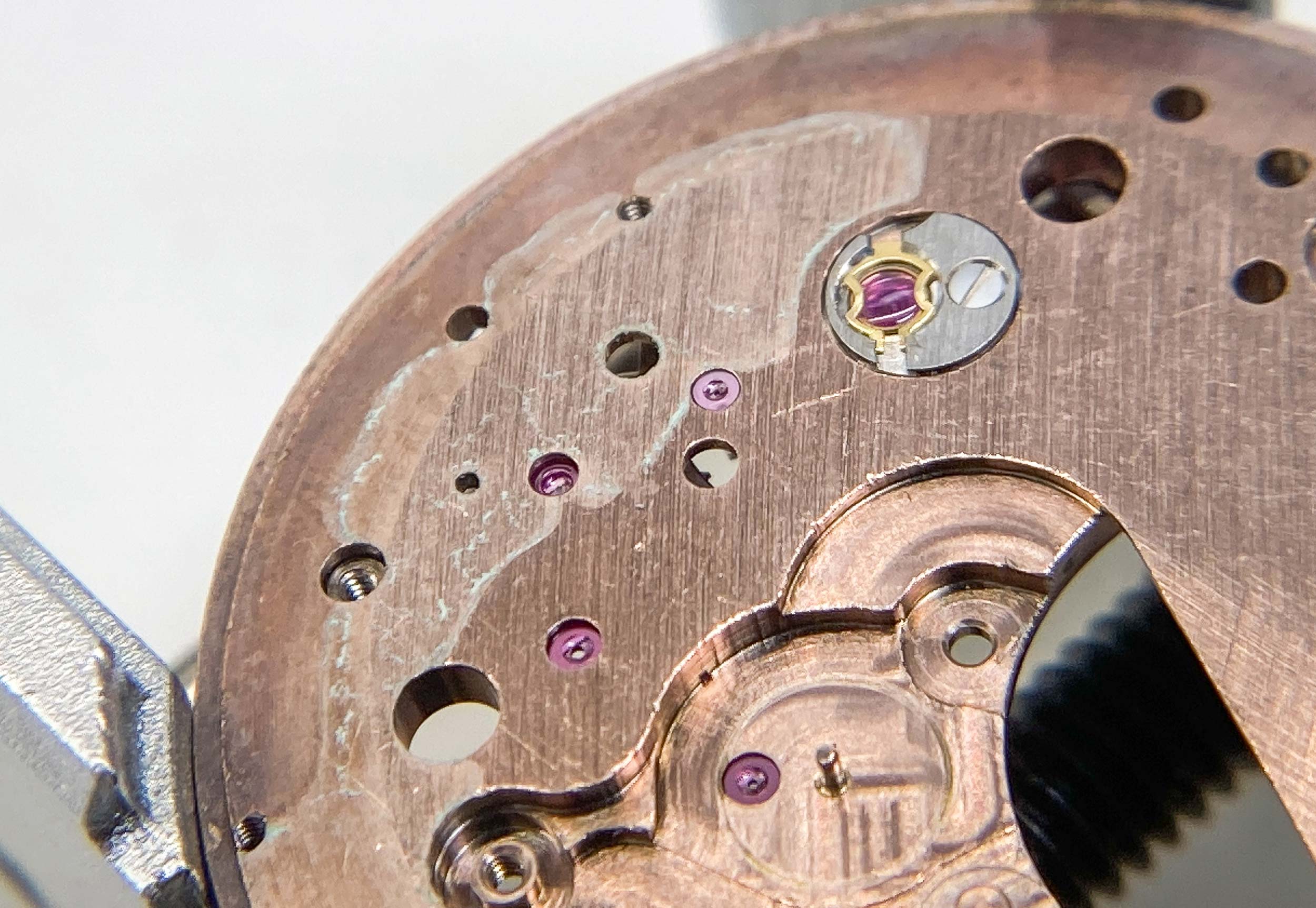
What Caliber was this it anyway?
To order a new setting lever, I had to work out what sort of movement this was. The train bridge was engraved with NIVADA GRENCHEN and a smaller CROTON mark. Then we have a couple of less meaningful markings: P3B and C2448. Google quickly confirmed P3B C2448 as the model number and this watch, as the other P3B models, had been built around the Peseux 330 movement. Removing the balance confirmed this with ‘P 330’ engraved into the main plate
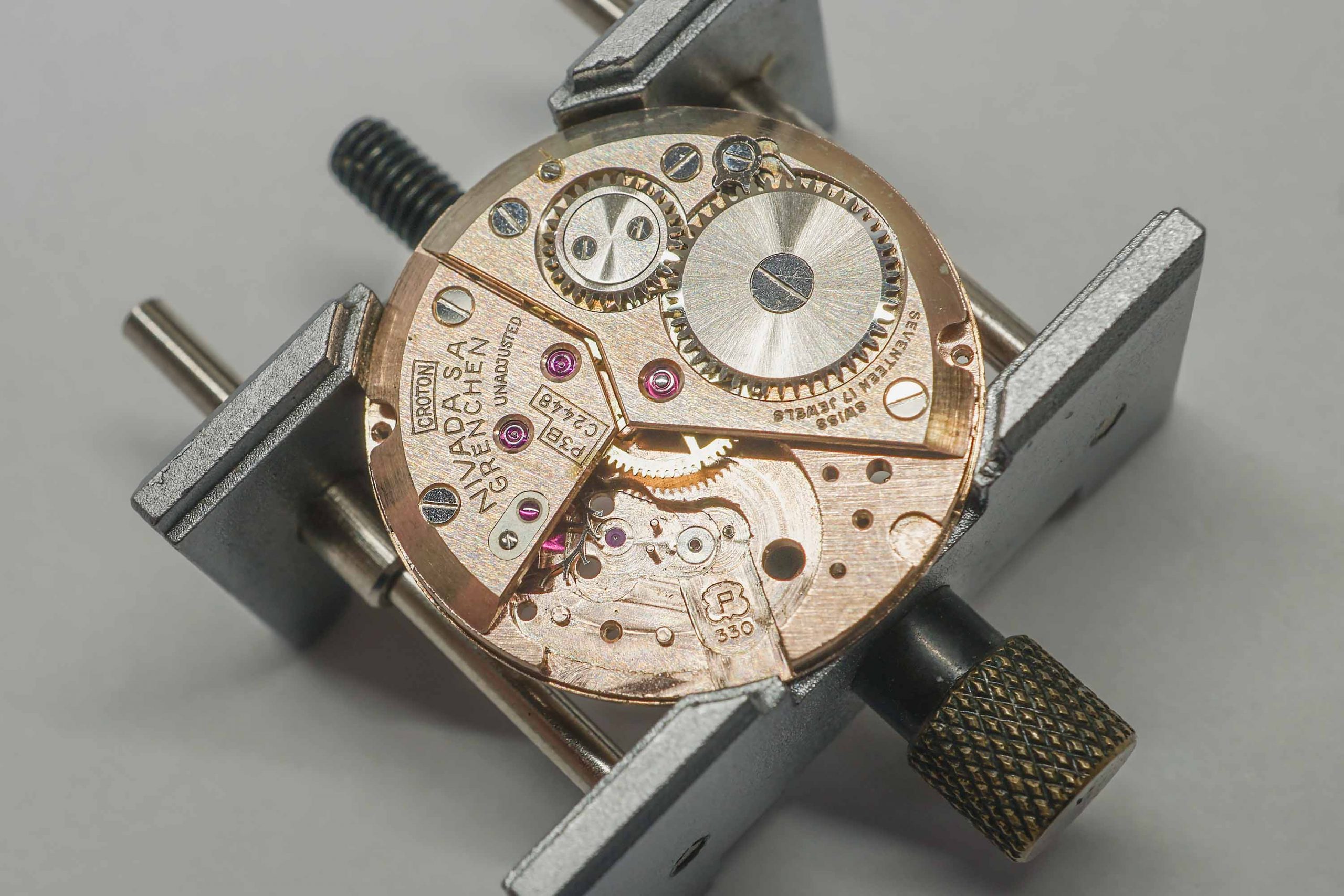
Pesaux were a Swiss ébauche maker founded by Charles Berner in Neuchâtel in 1923. It became famous for its quality, reliable hand-wound movements that found their way into Omega, Cartier, Gerard Perregaux and Blancpain. By 1933 it became a independent subsidiary of Ebauches SA and then in 1985, Pesaux, were consolidated into ETA. The Pesaux brand name continued after consolidation in the form of the ETA-Pesaux 7001, used for many years by Nomos.
With the movement identified, the new setting lever was ordered and service continued. When dismantling a movement for service there are many small differences from one manufacturer to another. For example, vintage Seiko movements have a feel familiar to me – bridges and plates tend to be well-made but thin. The impression is that parts were engineered to be up to the task but not much beyond that. Older Valjoux movements appear less well-finished but they are also devious in their arrangement to achieve multiple functions simply.
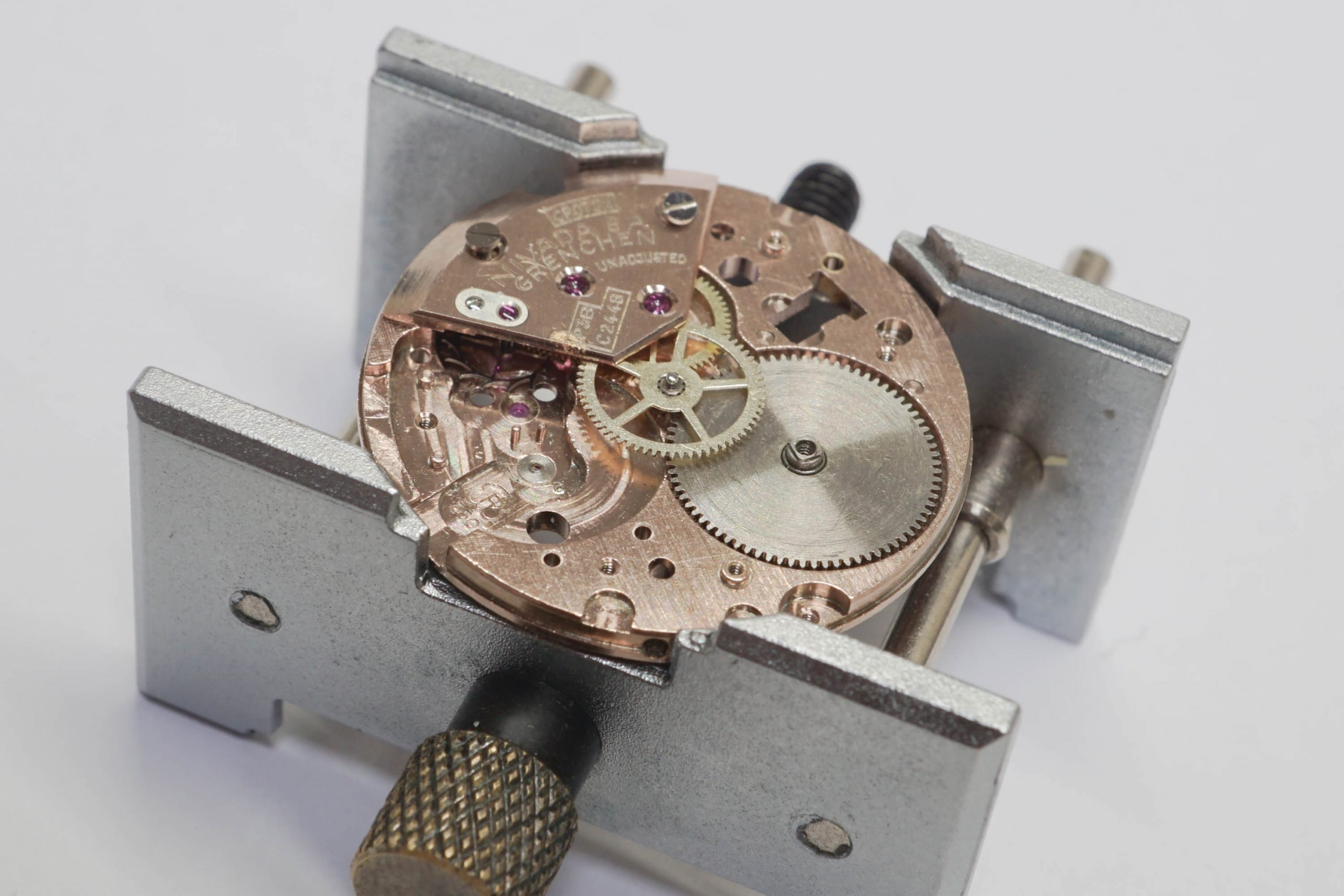
This Pesaux felt different again as I worked on the movement. The bridges were thick and robust with tight tolerances. While a less substantial bridge can be lifted off with tweezers, the tight tolerances of the Pesaux meant each bridge had to be carefully levered up with screwdrivers. Planning for this, the Pesaux watchmakers had machined small indents in all the bridges to insert the screwdriver. Seeing this sort of forethought and attention to practical rather than merely decorative detail was a real delight for me.

Lacking a date complication meant that the dial side was simple and with the exception of the broken setting lever, and yielded no further surprises. With the new lever fitted and the movement back together after service, good amplitude and precision were restored. During a 24-hour run in period the rate remained within 5 second per day in all positions so the attractive beryllium copper movement was put to one side to work on the case.
I decided not to attempt to bend the delicate misshapen lug. This is the sort of task that requires care and experience, and not something to be attempted for the first time on an important family heirloom. The damage had not cracked or weakened the lug so it seemed reasonable to err on the side of caution and leave it as is. That lug damage is part of the watch’s story after all. In the end the case was merely cleaned and the tarnish removed with a little gold polish.

The dial was in excellent condition needing only a very light cleaning. The hands however presented a problem. When I removed the minute hand for service, the lume crumbled and fell from the hand leaving one hand with beautifully-aged lume and one hand with nothing but an elongated hole where the line should have been. A restoration decision had to be made.
One option was to leave the hands original which would mean that John would be looking at a perfect hour hand but a mismatched damaged minute hand. An alternative was to relume just the minute hand and match the colour of the hour hand. However, if I could not get the match exactly right, I thought that would lead to an equally unsatisfactory result. Furthermore, any match if successful, would be only temporary since the two hands would now age and patina at different rates.

Therefore, I decided to relume both hands and match the lume colour to the tiny lume dots on the dial. I salvaged as much old lume as possible, mixed it with a minimal amount of new white lume and some colorant and applied it to the cleaned and polished hands. The result was perfect. The color of the new lume was almost exactly the same as the aged lume and now it would should stay stable for many years. Any aging that happens from now on, will also happen to both hands evenly.

The lack of a replacement crystal the right shape and size meant refinishing the existing crystal. Re-polishing was straightforward as there was no significant damage, just many minor scratches.
With the movement repaired, serviced and running well, the dial cleaned, hands re-lumed, the crystal polished and the case untarnished, the restoration was complete and an already good vintage watch has been made great again, ready to make more memories with John.


